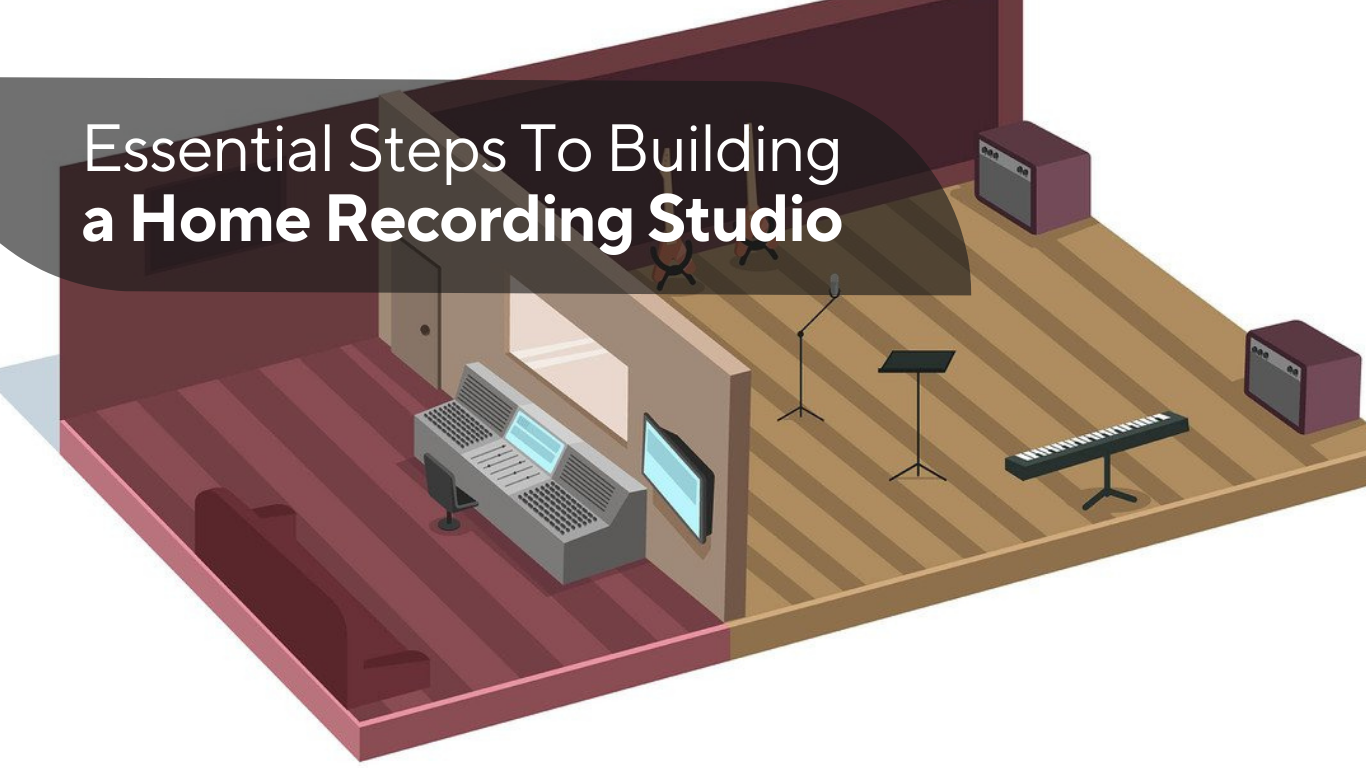If you’re an artist, a musician, or even a producer it’s more than likely that at some point in your music career, you’re going to want to be able to record, mix, and master your own music. Preferably in a studio or a high-quality recording/mixing environment.
In 2022 renting a professional studio out is NOT a cheap expense and for most, it’s unsustainable over a long period of time. And because of that, we’re going to be showing you all of the essentials for turning any spare room in your house, into a professional home studio.
Step 1: Find The Right Room
If you only have one room to choose from, then you can skip this step and move on to step 2.
But if you have options, or if you would like to try to optimize the room you do have, here are a few things to keep in mind:
Bigger Is Not Better
This solely depends on what you plan on doing with your studio.
If you want to record any live instrument(s) you might want to go with a larger option, but if you just want a place to record vocals and mix songs, you could easily settle for a walk-in closet and it would do the trick.
The goal is to take what you already have and transform it into something that will be efficient for what your needs are.
Avoid Windows If Possible
Experts agree: windows are one of the most reflective surfaces when it comes to sound waves, which is not something we want for recording and mixing our music.
If possible, try to find a space with no windows. Or a space where you will feel comfortable covering them up in some way later down the line.
Downstairs or Upstairs?
When Rooms are upstairs they tend to make more noise. This could be from other people, footsteps, ambient house sounds, or anything else. So choosing a room that’s secluded is definitely the best option.
A garage can work here, but a basement room is probably one of the best options in my opinion.
Step 2: All About Noise
Everyday noises you’re used to, like lawnmowers, cars, barking, footsteps, doors creaking, HVAC systems, water running, etc. are amplified when you’re recording.
If you don’t take the necessary steps in order to isolate these sounds, then they will show up in your recordings which is not something you want. Here are a few things you can do to achieve this:
Soundproof the room
Add anything with mass but preferably furniture. Soft furniture like a sofa or couch is great for reducing reflections. Hard furniture gives sound more places to bounce off of so try to avoid this if possible.
Cover the windows.
If your room has windows, cover them up either with acoustic treatment or curtains.
I recommend curtains if you don’t want to add any extra expense to the acoustic treatment.
Moving blankets also work great too, they are thick and usually padded so they absorb sound very well and prevent reflections but you can use bed sheets if you don’t have any moving blankets lying around.
Add Carpet or an Area Rug
If you have a hardwood floor, the sound is going to have a great time bouncing around off of it and giving you a below-average mixing and recording experience.
A great way to dampen or eliminate the number of reflections that can be made from the floor is by adding an area rug or by having a carpet installed.
With a home studio, it’s impossible to filter out all noise, but keep in mind there are always things within the mix you can do to “De Noise” the recording. That being said, the less of that we have to do, the better.
Step 3: Add Acoustic Treatment
If you plan on mixing and mastering your music, investing in some Acoustic Treatment might be something you want to think about, to really create a high-quality home studio environment for you and your clients to work within.
Porous absorbers prevent flutter, echo, standing waves, and speaker-boundary interference response.
Resonant absorbers work at absorbing low-range frequencies. They also absorb sound which in turn, prevents reflections.
You don’t need to buy professional-grade acoustic panels or diffusers to acoustically treat your room but similar to when you buy a guitar, you get what you pay for. And you, your music, and your clients will be able to hear the difference.
So it’s your choice, not to mention a studio with acoustic treatment is more appealing to the eye and feels like a high-quality space to work within.
Step 4: Purchase a Reflection Shield
You don’t need a vocal booth to get high-quality vocals. A far cheaper and more straightforward option for recording crisp vocals is to purchase an Isolation Shield.
This is something you can set up on a stand that sits behind your microphone, which isolates, filters, and absorbs the excess sound. Thus allowing you to get a really professional high-quality sounding vocal recording.
This is a cheap alternative to spending thousands on a vocal booth that offers the same results. It’s also extremely convenient because it’s small and you can travel with it.
Here is the one I recommend.
Step 5: Setting Up Your Studio
Professional studios have multiple rooms, each with a different function. But because we don’t have that luxury, it means the placement of our equipment will be essential to our workflow in and within our studio space.
If you’re recording others, you should do your best to make the place where you record and the place where you mix, separate from each other. This will mean you and your clients won’t have to breathe down each other’s necks while working and will guarantee a more efficient workflow.
That being said, If it’s just you recording in your new home studio, then you have more options for setting it up however you’d like, for what works best for you.
The great part about building a home studio is it’s yours, so you can tweak things exactly how you like as you begin to work within the space. Everything within the room is forever changeable and you should set it up whichever way suits your workflow and for what you plan to do, the best.
If you’ve followed all of these steps then I think you’re ready to start building your very own home recording studio. Happy recording!

